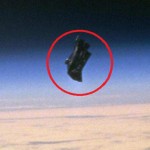First Indian dedicated satellite – Astrosat, launched successfully
The first Indian dedicated satellite for astronomy research, Astrosat, launched successfully on Monday, from Sriharikota. The Polar Satellite Launch Vehicle PSLV-C30 has carried it into a low earth equatorial orbit, after its take off from the first launch pad of Satish Dhawan Space Centre, Sriharikota at 10 am, along with six small satellites of international customers. PSLV will fly in its extended configuration this time, keeping in view the total payload weight of 1631 kg. The Astrosat has the ability to observe celestial bodies like distant stars and cosmic X-Ray sources in different wavelengths simultaneously.
The scientists of the Indian Space Research Organization ISRO have given the launch vehicle PSLV-C30 final touches for its 31st flight. Along with Astrosat, four identical nano-satellites of Spire Global Inc., the US, a micro-satellite from Indonesia and a nano-satellite of the University of Toronto, Canada were also took took off. The science research mission Astrosat with five years of intended operational life would serve as a space observatory.
PSLV-C30 was launched from First Launch Pad (FLP) of Satish Dhawan Space Centre (SDSC) SHAR, Sriharikota. PSLV-C30 is the tenth flight of PSLV in its ‘XL’ Configuration. The earlier nine flights of PSLV-XL were PSLV-C11/Chandrayaan-1, PSLV-C17/GSAT-12, PSLV-C19/RISAT-1, PSLV-C22/IRNSS-1A, PSLV-C25/Mars Orbiter Spacecraft, PSLV-C24/IRNSS-1B and PSLV-C26/IRNSS-1C, PSLV-C27/IRNSS-1D, PSLV-C28/DMC3 missions. The total payload weight of PSLV-C30 is 1631 kg.
International customer satellites of PSLV-C30
LAPAN-A2 is a Microsatellite from National Institute of Aeronautics and Space-Lhttp://www.alajadi.com/wp-admin/post-new.phpAPAN, Indonesia. LAPAN-A2 is meant for providing maritime surveillance using Automatic Identification System (AIS), supporting Indonesian radio amateur communities for disaster mitigation and carrying out Earth surveillance using video and digital camera.NLS-14 (Ev9), a Nano satellite from Space Flight Laboratory, University of Toronto Institute for Advanced Studies (SFL, UTIAS), Canada. It is a maritime monitoring Nano satellite using the next generation Automatic Identification System (AIS). Four LEMUR nano satellites from Spire Global, Inc. (San Francisco, CA), USA, are non-visual remote sensing satellites, focusing primarily on global maritime intelligence through vessel tracking via the Automatic Identification System (AIS), and high fidelity weather forecasting using GPS Radio Occultation technology.



